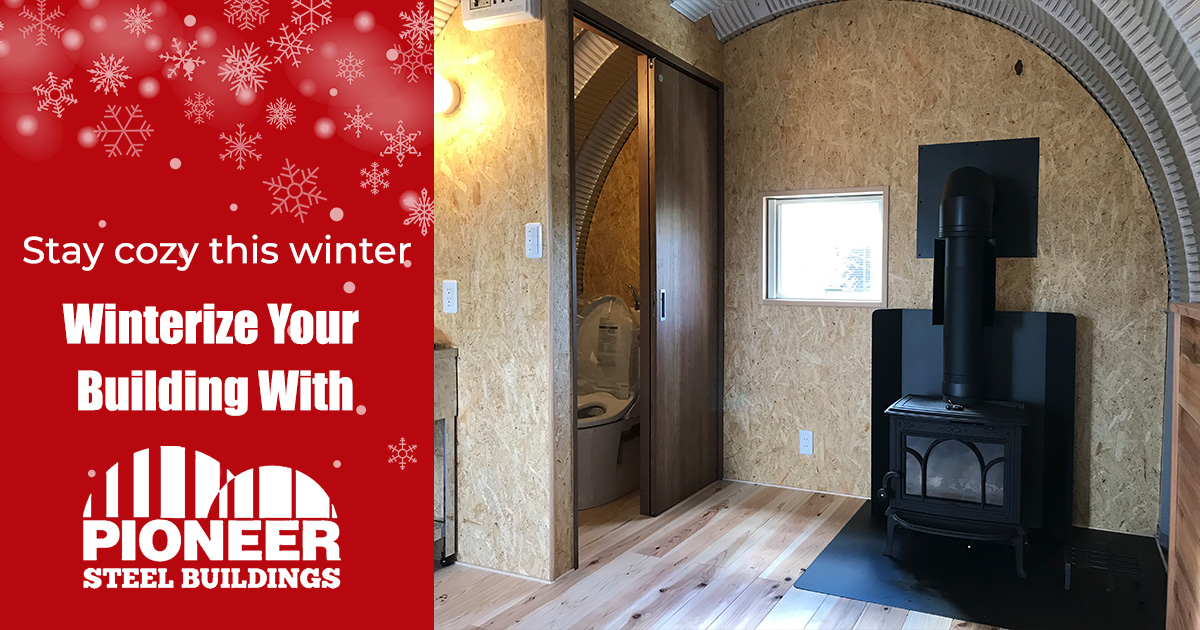
Winter in Canada isn’t just cold—it can be seriously cold. If you own a steel building—whether it’s a garage, workshop, storage unit, or recreational space—keeping it warm and comfortable during the long winter months is important.
Thankfully, Pioneer Steel buildings are not only durable and weather-resistant, but also easily insulated and winter-ready with the right preparation. Here’s how you can keep your steel building warm this winter without breaking the bank.
Start with Quality Insulation
Insulation is your first and most important line of defense against the cold. Steel conducts temperature efficiently, which means that without insulation, your building will lose heat quickly.
Pioneer Steel buildings are designed to easily integrate with several types of insulation, including:
- Fiberglass batts: Cost-effective and easy to install
- Spray foam insulation: Offers an air-tight seal and high R-value
- Reflective Foil insulation: Light weight and easy to install and usually used in combination with other insulation types
Proper insulation helps retain heat, reduce condensation, and improve energy efficiency—so your heating system doesn't work overtime.
Seal Up Gaps and Cracks
Even the smallest draft can significantly reduce the warmth inside your building. Before winter hits, inspect for:
- Gaps around doors, windows, vents, and corners
- Loose or damaged weatherstripping
- Improperly fitted access doors or sliding panels
Use caulking, foam sealant, or heavy-duty weatherstripping to seal air leaks and keep the warmth where it belongs—inside.
Add Efficient Heating Options
Depending on your building’s size and use, you have several heating options:
- Electric unit heaters: Compact and easy to install—perfect for small garages or workspaces
- Radiant floor heating: Ideal for workshops where you’ll spend hours working
- Propane or natural gas heaters: Cost-effective for larger structures
- Wood stoves or pellet stoves: Great off-grid option for remote or seasonal buildings
- Forced air systems: While sometimes the cheapest to install, forced-air systems can be less efficient due to heat loss through ducts.
- Heat pumps: For optimal efficiency, consider installing a heat pump, which transfers heat between the building and the outside air or ground.
Whichever system you choose, make sure your building has proper ventilation and safety clearances, especially for fuel-based heat sources.
Don’t Forget Ventilation
It might seem counterintuitive, but ventilation is critical in winter. Without it, warm air meets cold steel and leads to condensation buildup, which can potentially cause mold and mildew.
Add vents to regulate moisture and maintain good airflow. Paired with insulation, this keeps your space dry and warm all season long.
Use Smart Layouts and Zoning
If you're not heating the whole building, consider dividing the space with interior partitions to create a smaller, heat-retaining zone. You can also install portable radiant heaters in work areas for a targeted heat boost.
Stay Warm with Pioneer Steel
With the right accessories and winter prep, your Pioneer Steel building can stay warm, dry, and energy-efficient all winter long. Whether you're storing equipment, working on a project, or just keeping your tools safe from the cold, our steel buildings are built to handle Canada’s harshest weather—and keep the heat in.